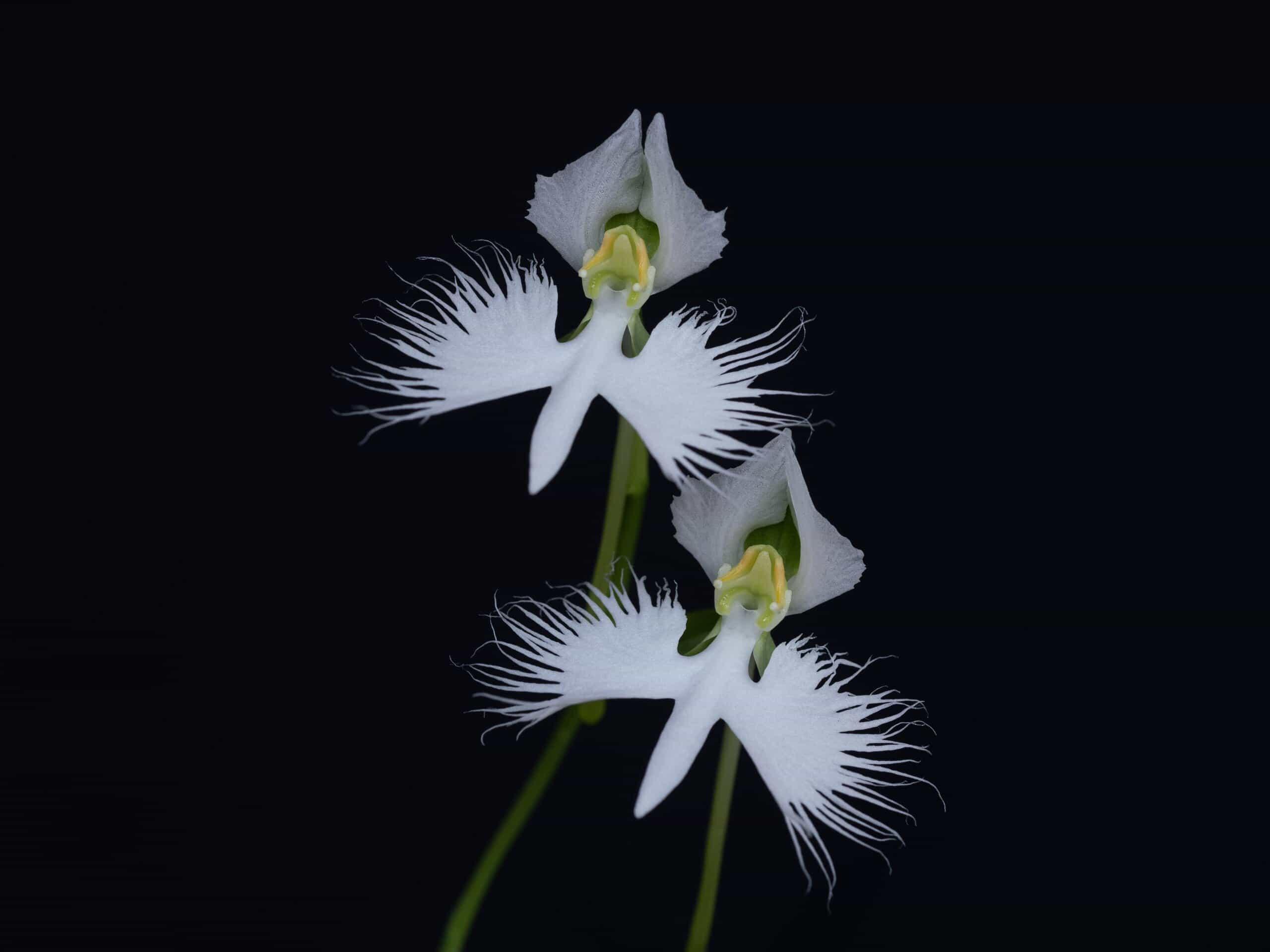Add a touch of the exotic to your home or garden with stunning plants that look like birds. Some of the species can be challenging to source. And all will require a little more attention than your average plant. However, when they are well-cared for, your unique plants will reward you with stunning flowers. Below, we explore seven plants that look like birds. You will discover how they look like birds, how best to care for them, and possible locations to source them.
1. Green Birdflower (Crotalaria cunninghamii)
A botanist discovered this stunningly beautiful flower in Australia in the 19th century. The striped, bright green leaves angle upwards and mimic the wings of a bird. It looks like the “beaks” are facing the stalk.
Description:
The green birdflower is a small shrub that grows up to 6 feet wide and 10 feet tall. It produces flowers that are bright green and resemble lovely birds.
USDA Hardiness Zones:
You can add the green birdflower to your garden if you live in Zones 10-11.
Sourcing:
Since it is native to Australia, you may have to hunt a little for this one. Check with seed companies that specialize in plants from other regions or countries.
Growing Conditions:
Crotalaria cunninghamii prefers moist soil and full sun exposure. They grow best in loamy or slightly sandy clay-based soils. You can propagate green birdflower through direct sowing or from cuttings.
Bonus:
In addition to its ornamental value, green birdflower is a traditional remedy to fight eye infections. And the stalk can get made into sandals.
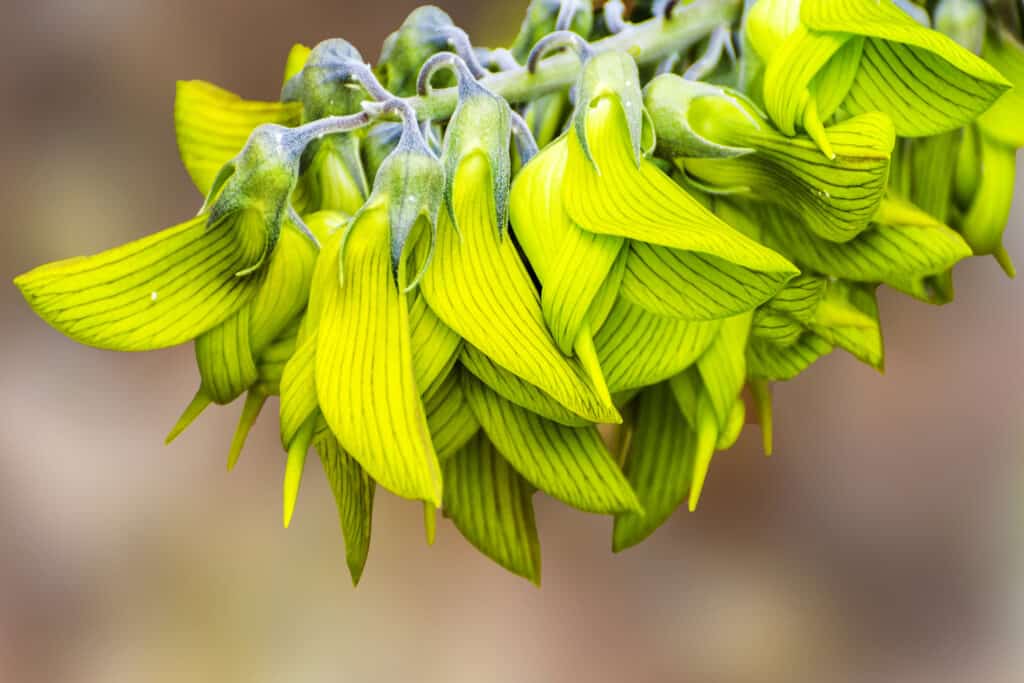
Green birdflowers look like a flock of birds feeding off the plant’s stalk.
©imagevixen/Shutterstock.com
2. Yulan Magnolias (Magnolia denudata)
The Yulan magnolia requires patience, as the flowers will take 6-7 years to show. However, when they bloom, you will be glad you planted them! Its flowers are goblet-shaped and a beautiful shade of white. They have the appearance of birds in flight.
Description:
This large, flowering tree grows up to 30 or 40 feet in height. Its beautiful white flowers bloom in March. It has dark green, obovate leaves that grow up to 6 inches long.
USDA Hardiness Zones:
The Yulan magnolia grows well in Zones 6-9.
Sourcing:
Contact your local nursery. They may be able to place an order for you if they do not have one in stock.
Growing Conditions:
The Magnolia denudata will grow in areas that receive partial shade but prefer full sun. Plant your Yulan magnolia in a rich, loamy soil. They are easy to grow and do not require much maintenance apart from regular watering.
If you are short on space but would still like to enjoy this tree’s beautiful flowers, you can prune it into a smaller shrub.
Bonus:
There are no known serious disease or insect problems.
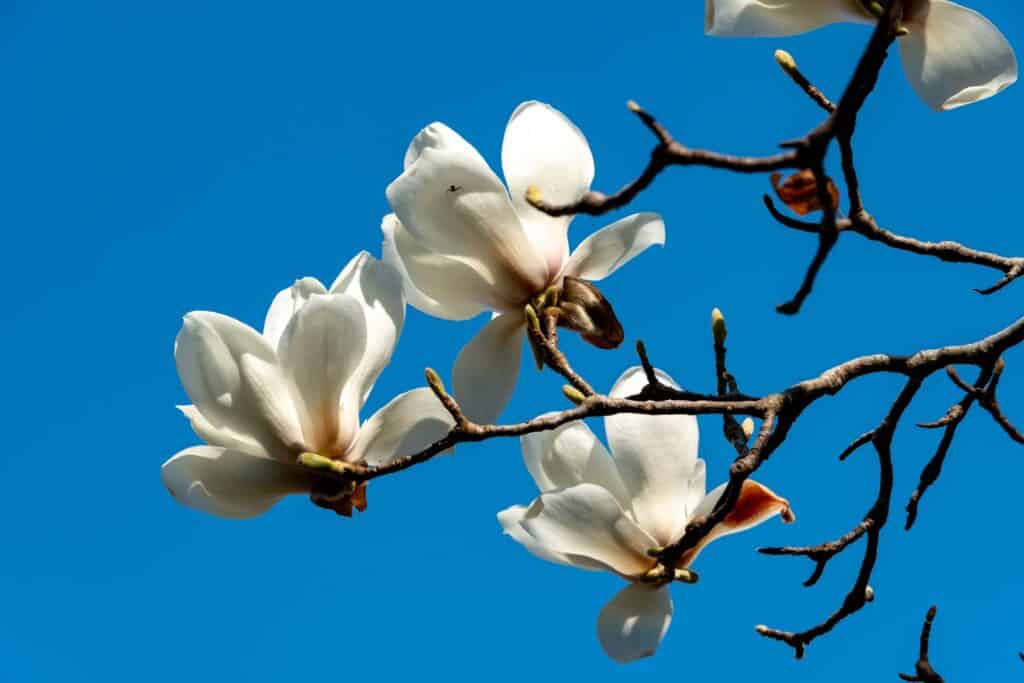
Yulan magnolias look like delicate white birds taking flight.
©Trialist/Shutterstock.com
3. Bat Flower (Tacca chantrieri)
If you can get your hands on any bat flower variety, you will be in for a serious treat. This lovely plant can bloom up to eight times in a season. It has white bracts rising above a deeply purple flower that looks like a bird’s wings.
Description:
Tacca chantrieri has bright green, shiny leaves. A cluster of purple flowers blooms from the center stem.
USDA Hardiness Zones:
Thankfully, the bat flower is suited for indoor container gardening. So if you do not live in Zones 9B-11, you can still enjoy this beautiful flower. However, if you do live in those zones, feel free to add it to your outdoor garden.
Sourcing:
The bat flower is a collector’s item and highly sought after. Keep your eyes peeled around Halloween. Your local nursery may have some in stock at that time.
Growing Conditions:
Treat your Tacca chantrieri much like orchids. They require good airflow, ample humidity, and a moderate level of light. It can survive indoors under the right conditions. The bat flower prefers well-draining, rich potting soil. Keep the soil moist without letting it dry out, and fertilize bi-weekly.
Bonus:
This beauty is largely pest and disease free.
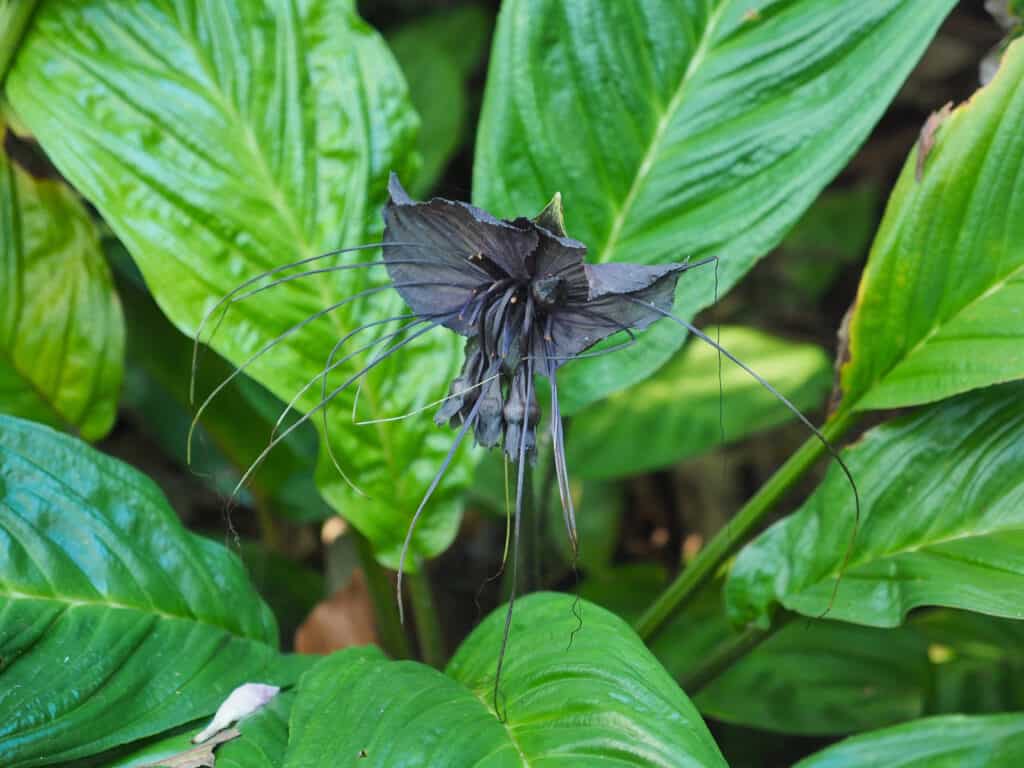
Bat flowers’ striking black petals look like birds’ wings, especially in contrast to the bright green foliage.
©Andreas Ruhz/Shutterstock.com
4. Bird of Paradise (Strelitzia reginae)
The bird of paradise is well-known for its stunning orange and blue flowers. The flower emerges from a beak-like sheath. Its right angle to the stem makes the flower look like the head of a bird.
Description:
This herbaceous perennial grows up to 4 feet high and wide. Its stiff leaves are evergreen. The leaves can grow up to 4 feet high, and the striking flowers stand on stalks above the foliage.
USDA Hardiness Zones:
As an outdoor plant, the bird of paradise will only grow in Zones 10-12. Indoors, it can thrive in any zone if provided with the right conditions.
Sourcing:
You can likely find this popular plant at your local nursery.
Growing Conditions:
Strelitzia reginae can be grown in areas that receive full sun or partial shade with loamy, rich soil. While it does require regular watering, it does not require too much attention. And if you forget to ask someone to care for your plants while you are gone, rest assured they tolerate a lack of water for a little while.
Bonus:
Bird of paradise flowers make excellent additions to cut flower arrangements.
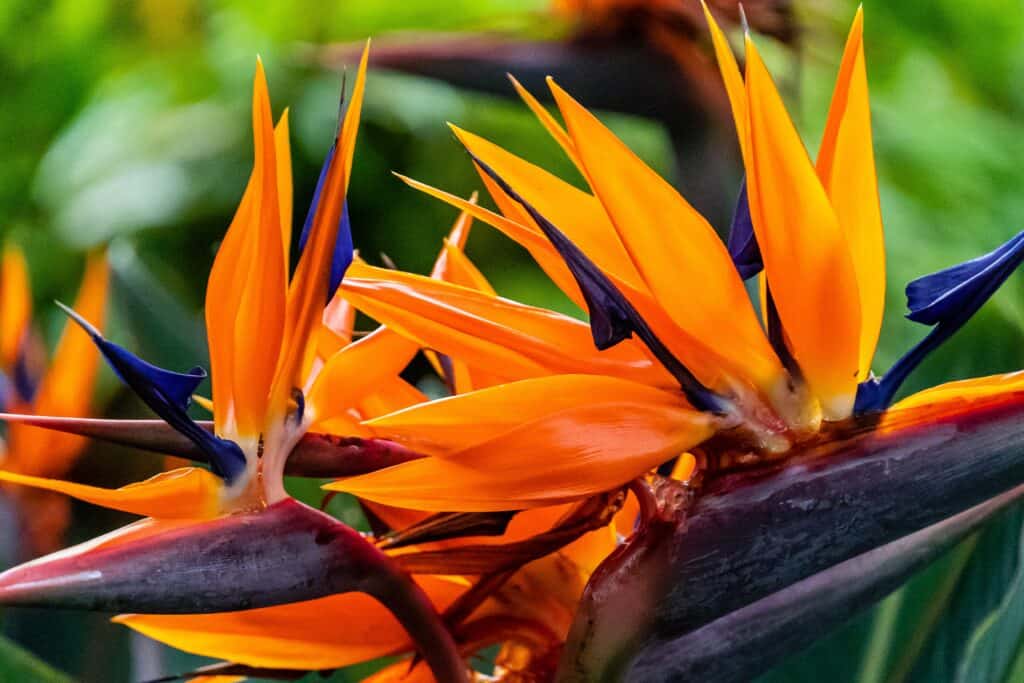
The iconic bird of paradise flower resembles a bird’s head.
©Wirestock Creators/Shutterstock.com
5. White Egret Orchid (Habenaria radiata)
The flowers of the white egret orchid are graceful and look like an egret taking flight.
Description:
The white egret orchid has small, strap-like foliage. You will not see any flowers bloom until late summer, but you will be glad you waited. Each flower spike can hold up to twelve blossoms. And they will add a lovely appearance to your home for weeks.
They can grow up to 18 inches tall. However, most people keep the orchids pruned to only 3-5 inches high.
USDA Hardiness Zones:
This lovely orchid can grace gardens in Zones 6-10. Consider bringing your white egret orchid indoors if you live in colder environments,
Sourcing:
Contact nurseries specializing in rare and exotic plants if you want to bring home this beautiful flower.
Growing Conditions:
Habenaria radiata is relatively easy to care for. However, it does need well-draining soil that is kept moist and partial to full sunlight. Additionally, since it is native to tropical and subtropical climates, it will need a humid environment.
The plants will grow large when left unattended. Taking time to prune them will help keep your orchid under control.
Bonus:
The white egret orchid is considered a symbol of luck and happiness.
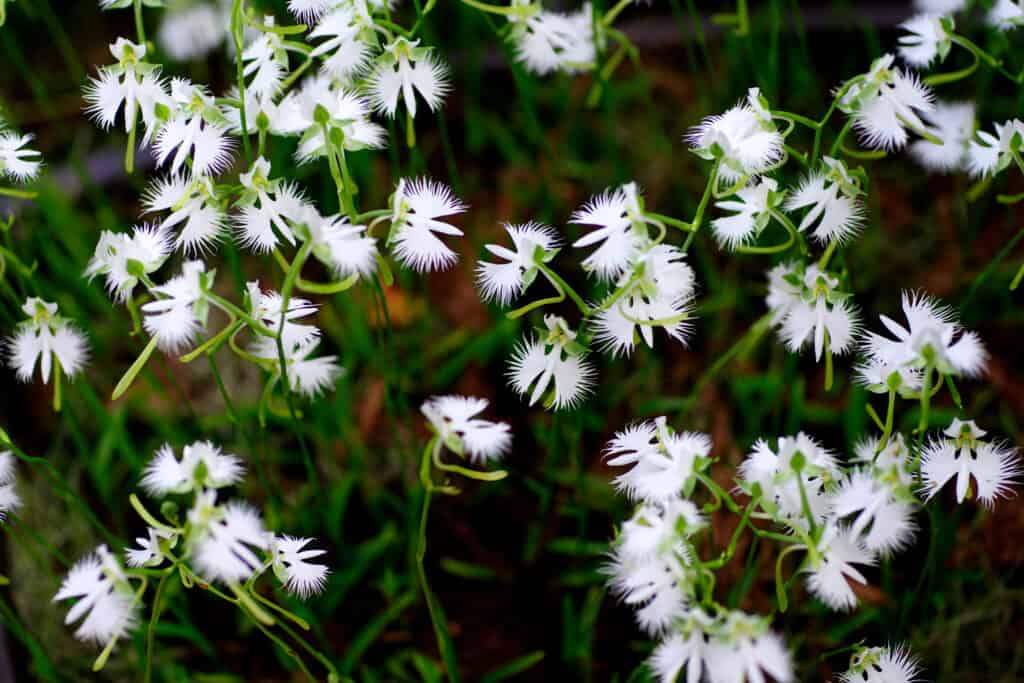
Delicate white egret flowers look like a flock of white egrets in flight.
©orihashi photo/Shutterstock.com
6. Large Flying Duck Orchid (Caleana major)
The stunning flower of the large flying duck orchid looks just like its namesake. When fully blossomed, it looks like a duck in flight.
Description:
Large flying duck orchids are perennial herbs that grow between 8 and 20 inches high. The plants have one narrow leaf with a reddish tint and a lance-like shape. Its flowers are reddish-brown and often produce as many as five on a single stem. The long sepals and petals have pointed tips.
USDA Hardiness Zones:
Due to its nature, including large flying duck orchids in gardens is discouraged. If you can source one, it is best to keep it indoors, which will work in any zone.
Sourcing:
This plant is native to Australia and may be difficult to source. Companies that specialize in exotic plants will be your best shot.
Growing Conditions:
Caleana major are difficult to cultivate and typically only last up to two years. However, don’t let that stop you from trying!
These stunning flowers prefer full sun exposure and sandy or gravelly soil. Like all orchids, it requires a relatively humid environment to survive.
Bonus:
If you can keep your Caleana major alive long enough to let it go to seed, you will get rewarded with up to 500 seed pods. You can then store these for future years.
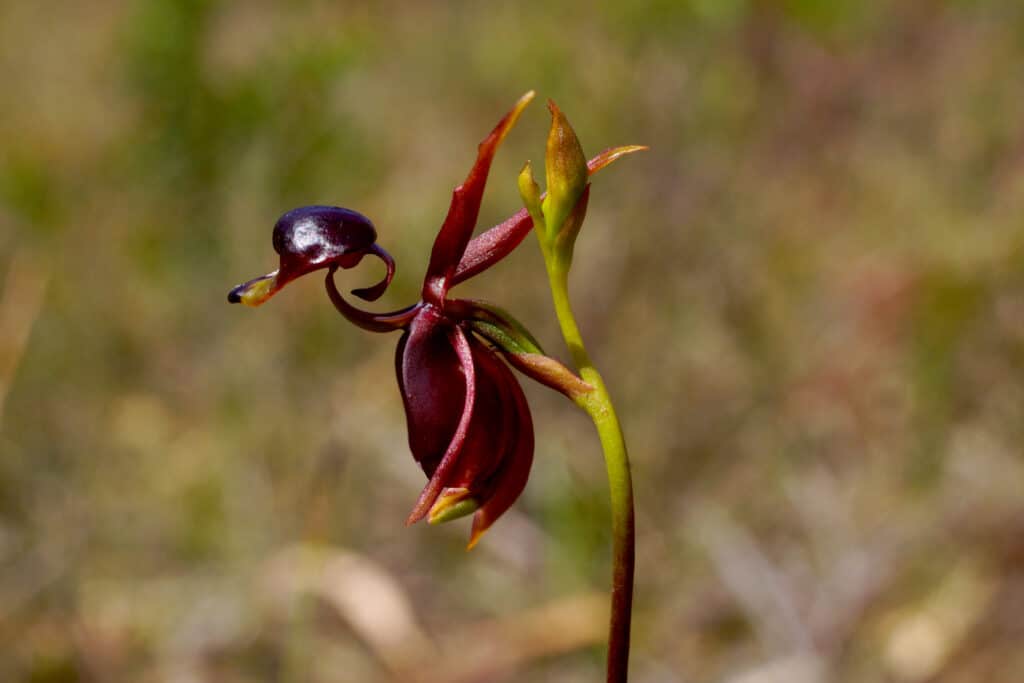
The remarkable large flying duck orchid looks just like its namesake.
©anjahennern/Shutterstock.com
Thank you for reading! Have some feedback for us? Contact the AZ Animals editorial team.

